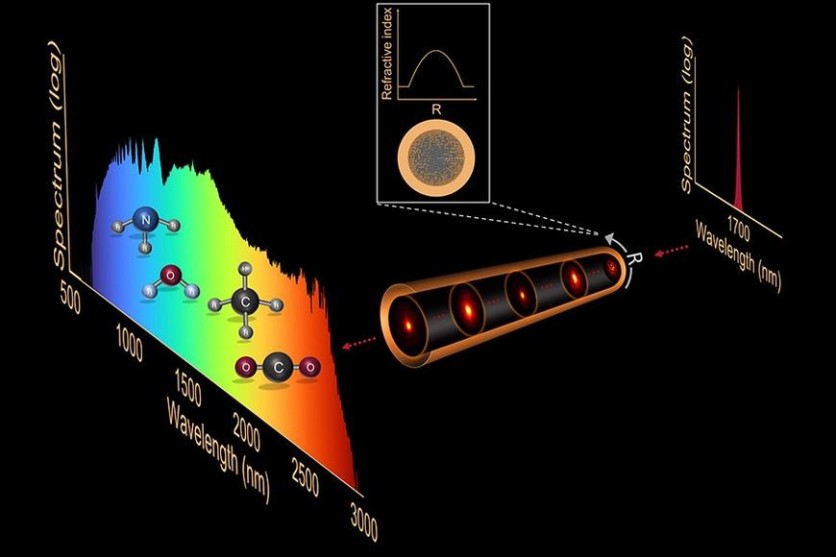
The new discovery for optical fiber designs showcases a breadth of potential across various industries and use cases. The Tampere University study, published in Nature Communications, enlists a novel optical fiber that uses a self-cleaned beam, essentially a laser light that creates a rainbow within the fiber's electromagnetic portion. Such a design could, in theory, allow users to track and record the most detailed information, from the likes of environmental monitoring and food control to cancer diagnostics and pollutant tagging.
Current standing formations in optical fibers have limited the potential in their output. Most modern optical fibers are not only designed on a single transverse intensity profile, which essentially means the optical fiber has very limited power potential but are also made with silica glass. This means that most conventional optical fibers can only transmit light to the near-infrared and visible spectrum.
More recent developments in optical fiber builds have yielded more rewarding results, best witnessed in optical fibers utilizing a refractive index. This allows the optical fiber a more robust set of contingencies, specifically an increased supercontinuum power and smooth beam intensity mode due to the refractive index's consistent variation set throughout the optical fiber.
Related Article: Queensland Researchers Develop an App That Will Protect Birds at the Verge of Extinction
"The refractive index variation of such graded-index optical fibers leads to periodic focusing and defocusing of the light inside the fiber that enables coupling between spatial and temporal nonlinear light-matter interactions," explained the Tampere University's research group head, professor Goëry Genty. "This leads to a self-cleaning mechanism that yields supercontinuum light with high power and a clean beam profile. As well as their many applications, they also provide a means of studying fundamental physics effects such as wave turbulence."
Together alongside groups from the University of Burgundy France-Comté and the University of Warsaw, the Tampere research team was able to produce an optical fiber with a non-silica graded index and self-cleaned beam that generated a two-octave supercontinuum from both the mid-infrared and visible position.
One of the many researchers on the project, Zahra Eslami, explains that their design "utilizes two types of lead-bismuth-gallate glass rods with different refractive indices drawn to yield a nanostructured core." This essentially allows the graded-index fiber "an effective parabolic refractive index profile" that can transmit information "up to the mid-infrared," as well as even "enhanced nonlinear light-matter interactions," which Elsami considers the "cherry on the cake."
Genty adds, "The novel solution will lead to more efficient supercontinuum light sources in the mid-infrared with many potential applications e.g., for pollutant tagging, cancer diagnostics, machine vision, environmental monitoring, quality and food control."
These newly developed optical fibers with self-cleaning potential could give future researchers and assorted industries a ton of insight. Specifically, the mid-infrared transmission gives a host of understanding of molecules' varied vibrational transition characteristics, allotting deeper forms of meaning for this specific material. Researchers can now leverage this type of fiber for such uses as next-gen broadband services and increased frequency combing for potentially even more enhanced capabilities in communication and more.
ⓒ 2025 TECHTIMES.com All rights reserved. Do not reproduce without permission.




